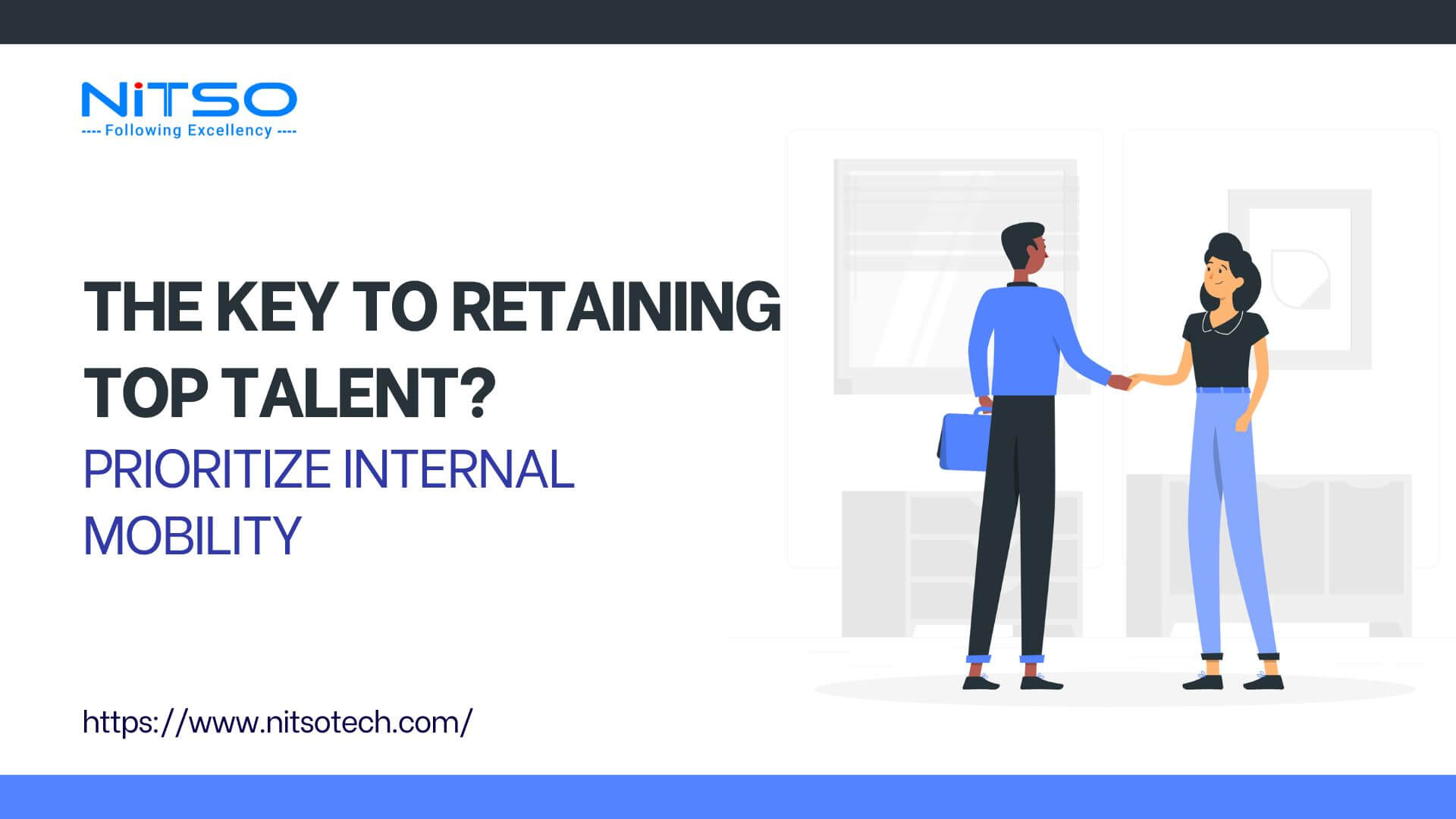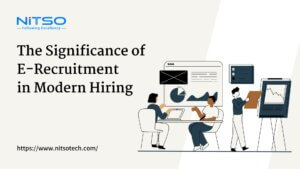Employee retention is crucial for companies looking to reduce costly turnover and retain top talent and institutional knowledge. One effective way to engage employees and encourage retention is through internal mobility programs.
Table of Contents
Internal mobility refers to the movement of current employees into new roles, positions, projects, or locations within the organization. This differs from external hiring, where companies recruit candidates from outside the organization to fill open positions.
An effective internal mobility strategy comes with many benefits:
- It allows companies to fill open positions by tapping into the skills and talents of existing employees who already understand the culture and systems. This means reduced hiring costs and onboarding time compared to bringing in someone new.
- It provides career development opportunities and keeps employees engaged by allowing them to learn new skills, take on diverse assignments and progress into more advanced roles within the company.
- It facilitates knowledge sharing between teams and departments as employees bring their expertise into new roles within the organization.
- It signals to employees that there are career growth and advancement possibilities within the company, reducing the urge to job hunt externally.
With the many advantages, it’s evident why leading companies leverage internal mobility as a strategic priority. A well-planned program can be a powerful employee retention and talent management tool.
In this article, we’ll explore best practices on how organizations can create and implement an effective internal mobility strategy to retain top talent over the long term.
Why does internal mobility matter?
There are several compelling reasons why organizations should prioritize internal mobility as a key piece of their talent management strategy:
1. Development of New Skills
Internal mobility allows employees to move laterally and take on new roles and responsibilities within the company. This facilitates continuous skills development as workers learn new capabilities required for different positions and projects.
Rather than remaining static in their jobs, employees can build experience across multiple departments and domains. This keeps them engaged while enabling the organization to nurture a wider range of in-house talent.
For example, an accountant may move into a financial analyst role, allowing them to develop forecasting and modelling skills they likely didn’t use in their previous position. Or a software engineer could transition into a product management position to gain experience with requirements gathering and strategic planning.
2. Filling Open Positions
Hiring externally can be time-consuming and expensive. Internal mobility is an efficient and cost-effective way to fill open requisitions.
Current employees are already familiar with the company’s culture, systems and processes. This means they onboard and ramp up faster when taking on new roles since they don’t have the extensive learning curve of an external candidate.
Promoting from within also builds goodwill among existing employees as they see tangible career progression opportunities. It reinforces loyalty and engagement – key factors in retention.
3. Knowledge Sharing
As employees move across different departments and teams via internal mobility, it enhances knowledge sharing within the organization.
Workers gain exposure to diverse processes, systems, and approaches used in those new areas. They can then transfer some of these best practices back to their original teams.
This cross-pollination of ideas across silos is great for organizational learning. It prevents stagnation and helps disseminate innovative ways of tackling problems.
4. Growth Opportunities
One major reason employees leave companies is a perceived lack of career growth.
Robust internal mobility demonstrates that there are advancement paths for motivated employees within the organization itself. They don’t have to necessarily leave and change companies to move up the career ladder.
This breeds loyalty and incentivizes workers to strive for internal promotions and lateral shifts into new challenging roles that expand their skills.
In summary, a strategic focus on internal mobility has far-reaching benefits for retaining top talent over the long haul and sustaining a robust internal pipeline of skills.
How to create an internal mobility strategy?
Developing a successful internal mobility program requires planning and forethought. Here are some best practices for organizations looking to build an effective internal mobility strategy:
1. Identify High-Potential Roles
Not all jobs may be suitable for internal transfers. Strategic roles that would benefit from institutional knowledge should be prioritized for internal mobility.
For example, senior management positions, jobs involving confidential projects, and specialized technical roles where ramp-up time is lengthy for external hires.
Conducting workforce planning and analysis can determine where internal mobility would have the most impact and value.
2. Create Transparent Application Process
The application and selection process must be transparent and clearly communicated across the organization.
All open positions should be posted on internal job boards. Provide detailed role requirements and expectations.
Encourage interested employees to submit applications and outline the interview and assessment process they can expect.
Ensure the process is fair and applied consistently. Communicate selection criteria and decisions to all applicants.
3. Offer Development Programs
Provide training, mentorship, and project opportunities to help those interested in internal mobility build the required competencies.
Partner with senior staff with high potential to groom them for leadership roles. Offer courses and certifications to gain new skills.
Providing development pathways encourages mobility by allowing employees to become qualified applicants.
4. Track Employee Career Goals
Survey employees periodically to capture their skills, interests, and future career goals.
Maintain a database of this data and use it to identify good role fits when internal vacancies arise.
Proactively reach out to move suitable candidates into new opportunities aligned with their aspirations.
5. Prioritize Internal Postings
Before considering external recruitment, open positions should be posted internally first.
Give sufficient time for current employees to apply and be evaluated before casting a wider net.
This reinforces a culture that values developing talent within before looking outward.
Implementing these best practices requires investment and coordination across HR, management and employees. But the rewards of building a robust internal mobility engine are immense.
How to support internal mobility?
Companies should provide support structures to set employees up for success as they navigate internal transitions:
- Career coaching to help employees identify roles that match their strengths and development areas.
- Onboarding plans when transitioning into new positions to quickly get up to speed.
- Training and development resources to build capabilities for new responsibilities.
- Mentorship by experienced peers in the destination department.
- Networking opportunities with new teams and leaders.
- Feedback mechanisms to address gaps and improve mobility experiences.
With the proper scaffolding, employees can thrive as they take on new challenges through internal mobility.
How to overcome internal mobility challenges?
While internal mobility programs offer many benefits, companies need to be aware of potential pitfalls and risks:
- Perceptions of unfairness: Employees may perceive the internal hiring process as biased if selection criteria are not standardized and transparent. Clearly communicate requirements and encourage fair competition between candidates.
- Manager resistance: Managers may block employees from transferring to avoid personnel gaps in their teams. Leadership must reinforce that developing talent across the company takes priority over departmental resource concerns.
- Role transition challenges: Employees may struggle with learning curves in new positions if not properly supported. Provide adequate onboarding, training, and mentoring during transitions. Check in regularly on progress.
- Culture mismatch: Values and work styles can vary across teams. Candidates should assess culture fit before internal moves. Ensure adequate acculturation support is in place post-transfer.
- Biased decision making: Affinity bias can influence hiring decisions for internal candidates with whom hiring managers have existing relationships. Institute structured interviews and skills-based assessments.
- Productivity declines: Employees ramping up in new roles may see temporary workflow disruptions. Set reasonable expectations around transitional productivity dips and provide extra assistance.
How to measure internal mobility success?
Track program metrics like internal placement rates, external hiring costs, job satisfaction, learning hours completed, and employee retention rates. Conduct engagement surveys and interviews to gather direct feedback on mobility experiences.
Analyze performance reviews and career trajectories of participating employees compared to non-participants. Refine the program based on insights uncovered in the data.
Article you might be intrested in: Key Insights into Employee and Employer Agreements
Key Takeaways
Internal mobility is a strategic imperative for organizations seeking to engage and retain top talent in a competitive hiring market. Here are the key takeaways:
- Internal mobility facilitates continuous skills development and career growth opportunities that incentivize employees to stay for the long haul.
- A robust internal mobility program is a key pillar of both talent management and retention strategies.
- Transparent processes, development programs, and support structures are needed to help employees successfully transition into new roles.
- Workforce analytics should identify strategic roles to prioritize for internal moves based on skill requirements and knowledge retention needs.
- Metrics like internal placement rates, external hiring costs, and employee retention should be tracked to measure program effectiveness.
- Internal mobility boosts engagement, cross-pollination between teams, and overall workforce versatility.
With deliberate focus and commitment from leadership, internal mobility can transform an organization’s ability to cultivate and retain top talent over time. The long-term dividends make the investment well worth it.








0 Comments